Basically there are two important things to know before we can proceed writing a new firmware.
I wrote about all the main steps of the process. If you like to see everything in detail please take a look at my YouTube Video.
First, there is some communication happening between the UI and motion controller board.
So the first thing I did was hooking up the scope to see what happens between both boards.
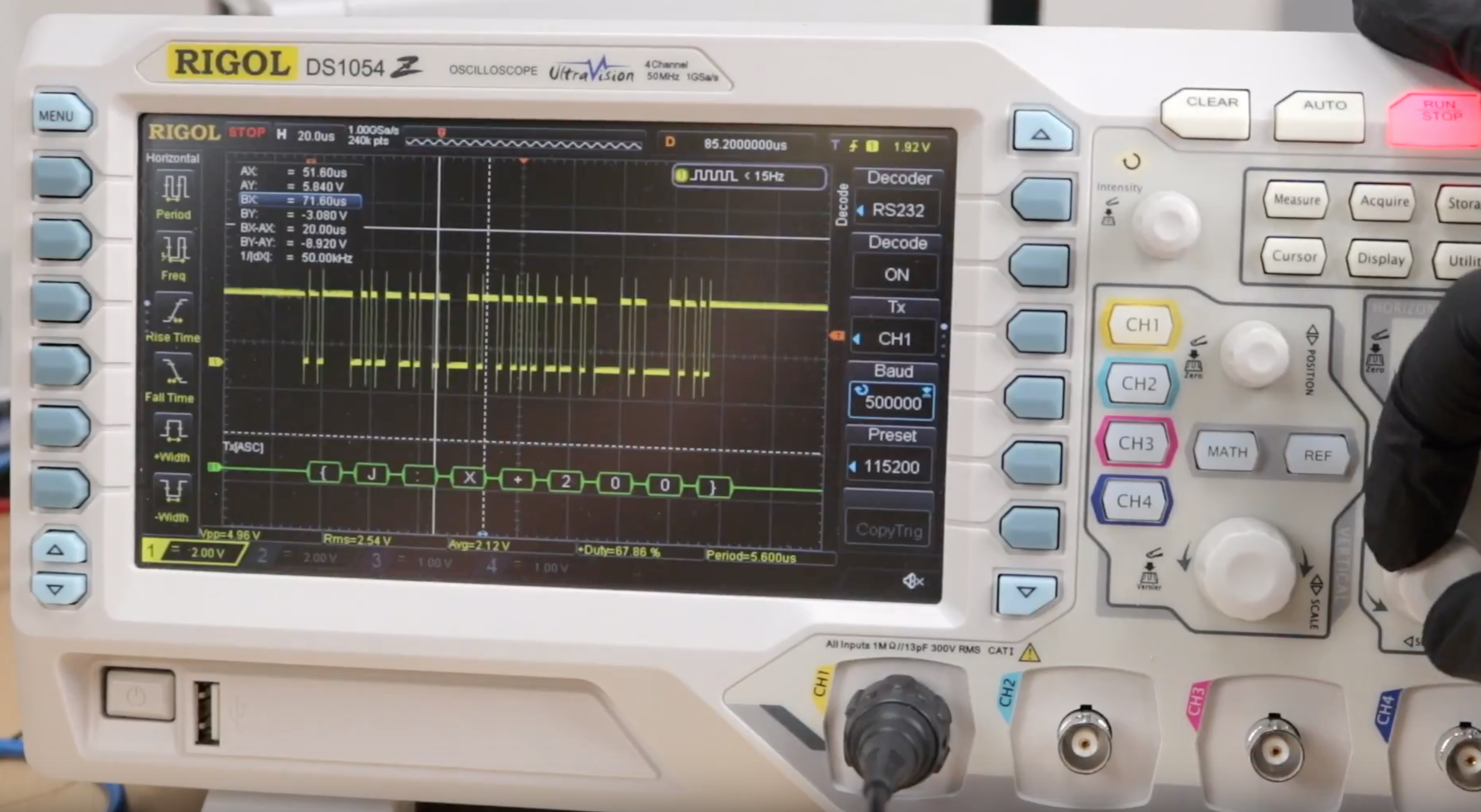 These boards communicate via UART at 500kBaud.
These boards communicate via UART at 500kBaud.
The UI controller transmits strings like:
{J:X+200} // Moves the X-Axis in a positive direction (the 200 is actually not 200mm's)
{S:I} // Asks the motion controller for a complete list of files on the SD card
{C:T0190} // Preheats the extruder to 190°C
...And second there is a 320x480 TFT Display attached to the board. (They are actually glued together with double sided tape). I had absolutely no success in finding any datasheet, pinout or any other piece of information about how to drive it.
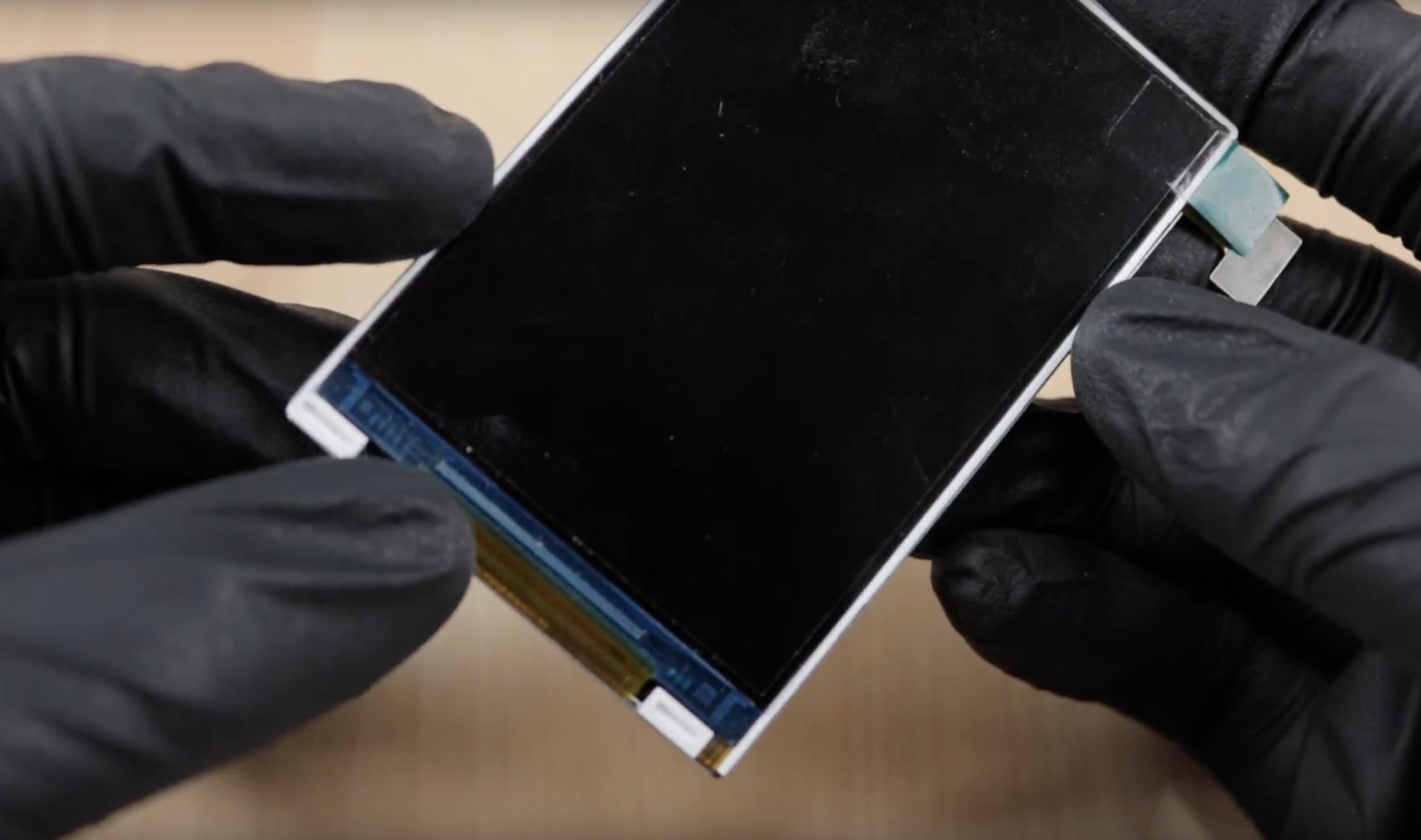
So I decided to sniff the traffic sent by the stock firmware.
They are driving the display in a so called 3-Wire SPI mode. That means every data packet contains an additional 9th bit indicating wether this packet should be considered 'data' or 'command'.

So usually those displays all have some initialisation you have to do on startup. That could be something like it's orientation or how you like to push RGB data.
What all pretty much have in common is that there are commands named Sleep Out/Sleep In and Power On/Power Off.
Usually, the first thing you do is call sleep out and power off on startup.
The first two commands transmitted over SPI are 0x28 and 0x11.
So I searched for all display drivers that are able to manage a 320x480 pixel TFT and use 0x28 and 0x11 as their sleep out and power off commands. This took a while but at the end of the day I found out that its most likely is the Himax HX8357 or compatible.
Before flashing my own firmware I made a backup to be able to go back at any time.
And yes, it is working! I've published my code on GitHub and already started to work on the actual firmware.
I really had a great time working on this project!
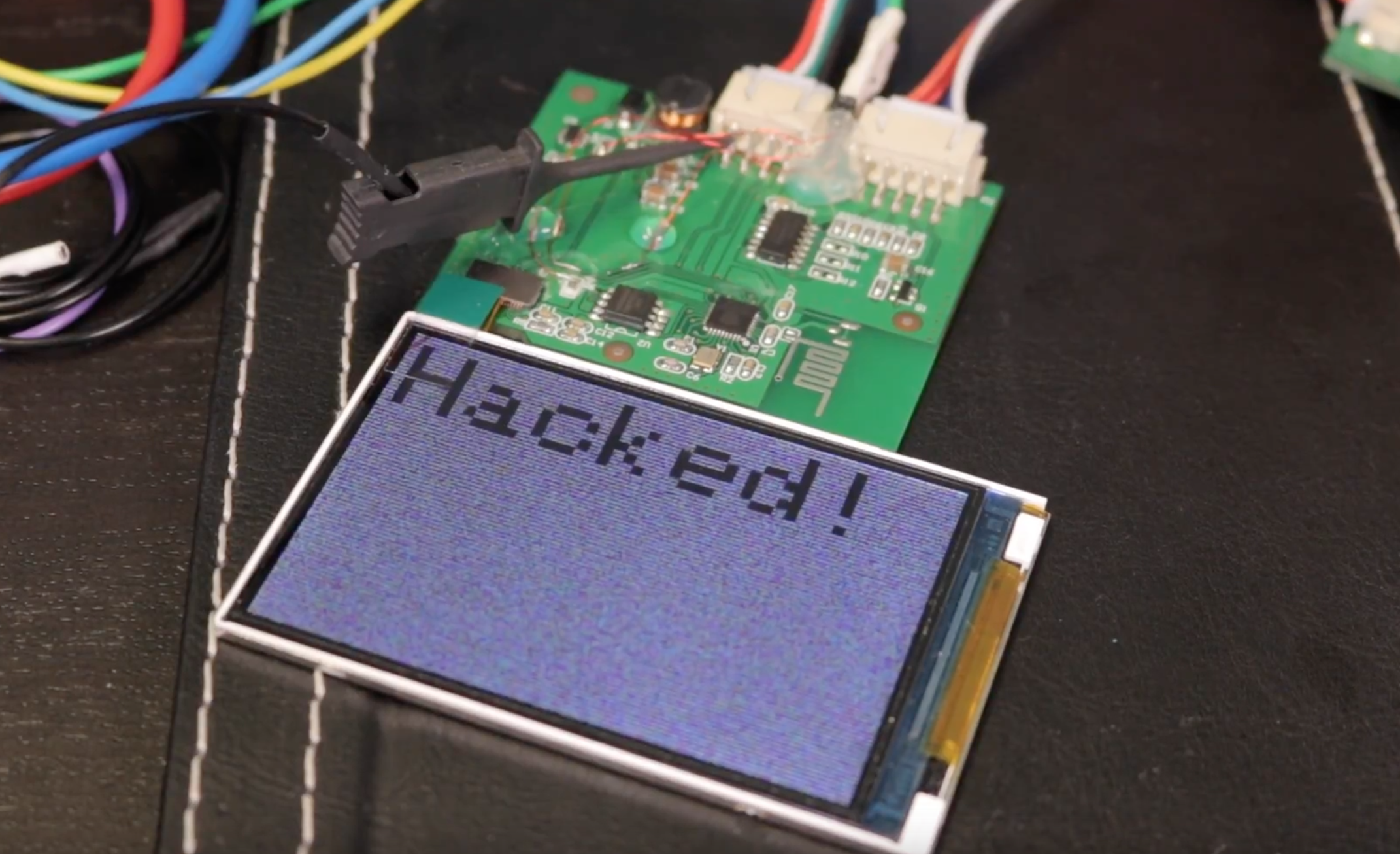
 Robin Reiter
Robin Reiter


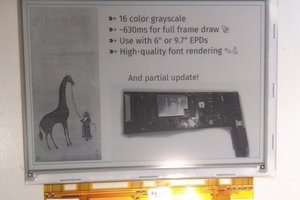
 Valentin
Valentin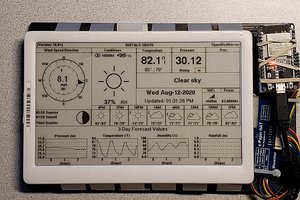

 Wenting Zhang
Wenting Zhang
 Jacob David C Cunningham
Jacob David C Cunningham
All I have been able to find out about the LCD panel shown in the video is that it is a TIANMA TM032PDZ04. It is listed as discontinued. There are a couple of sites that indicate you might be able to get the datasheet upon making a request. One such site is lcd-panels dot com.
It would be nice to have some open source software for the printer. One thing I've noticed about it is you can't see results of commands when they are issued via telnet access to the printer. When you issue a command it will say it was executed but any command that is supposed to show values won't.